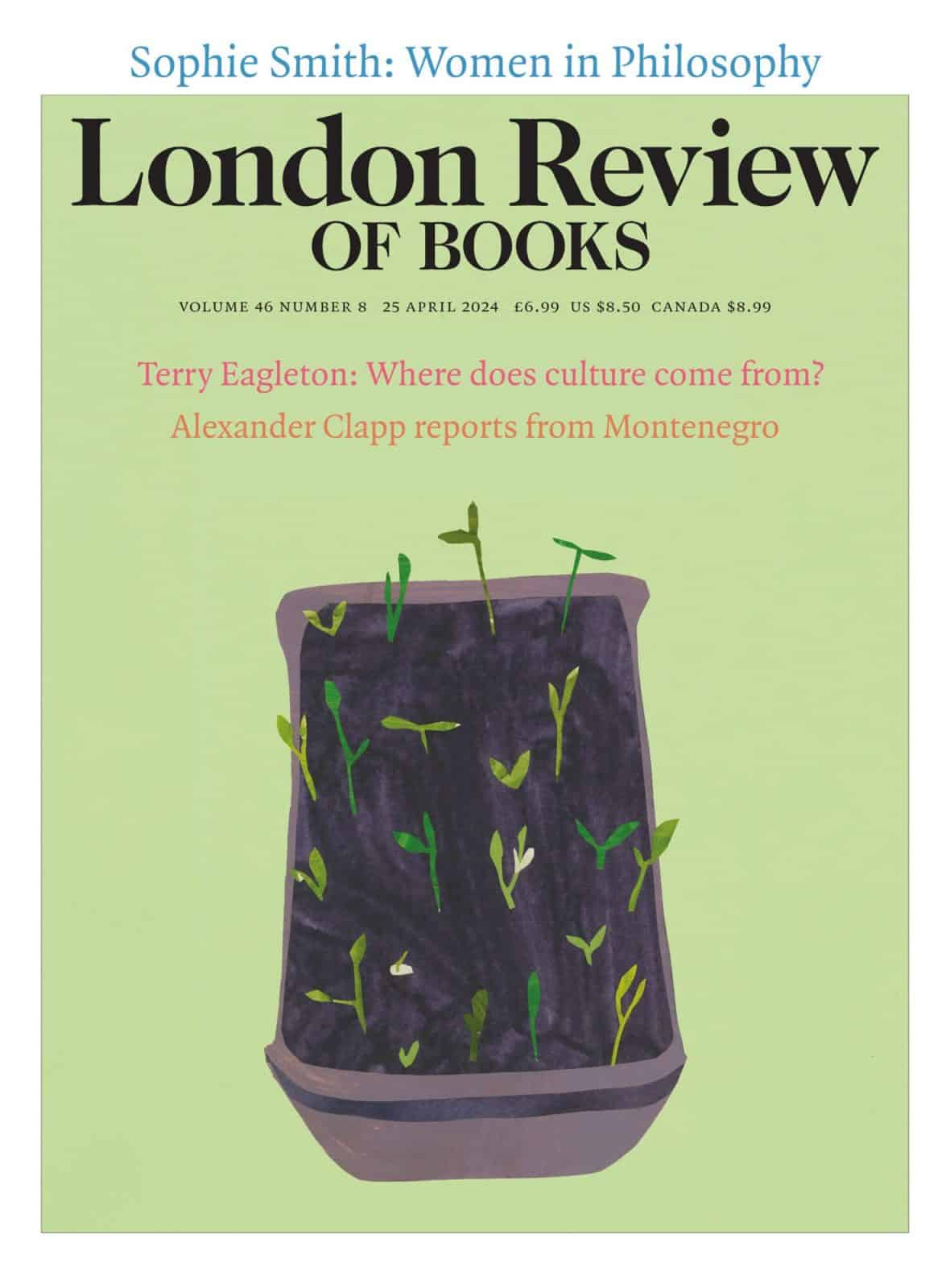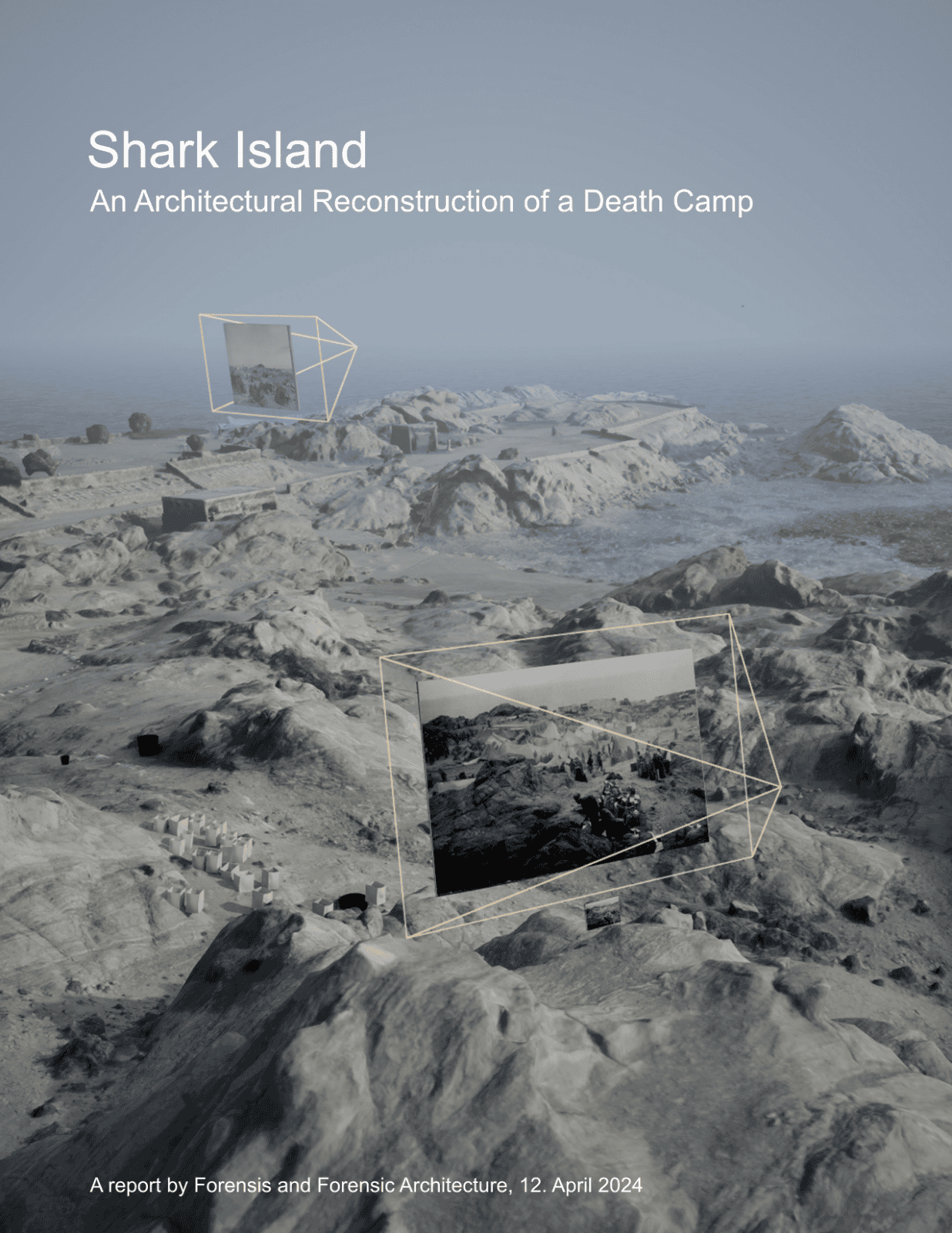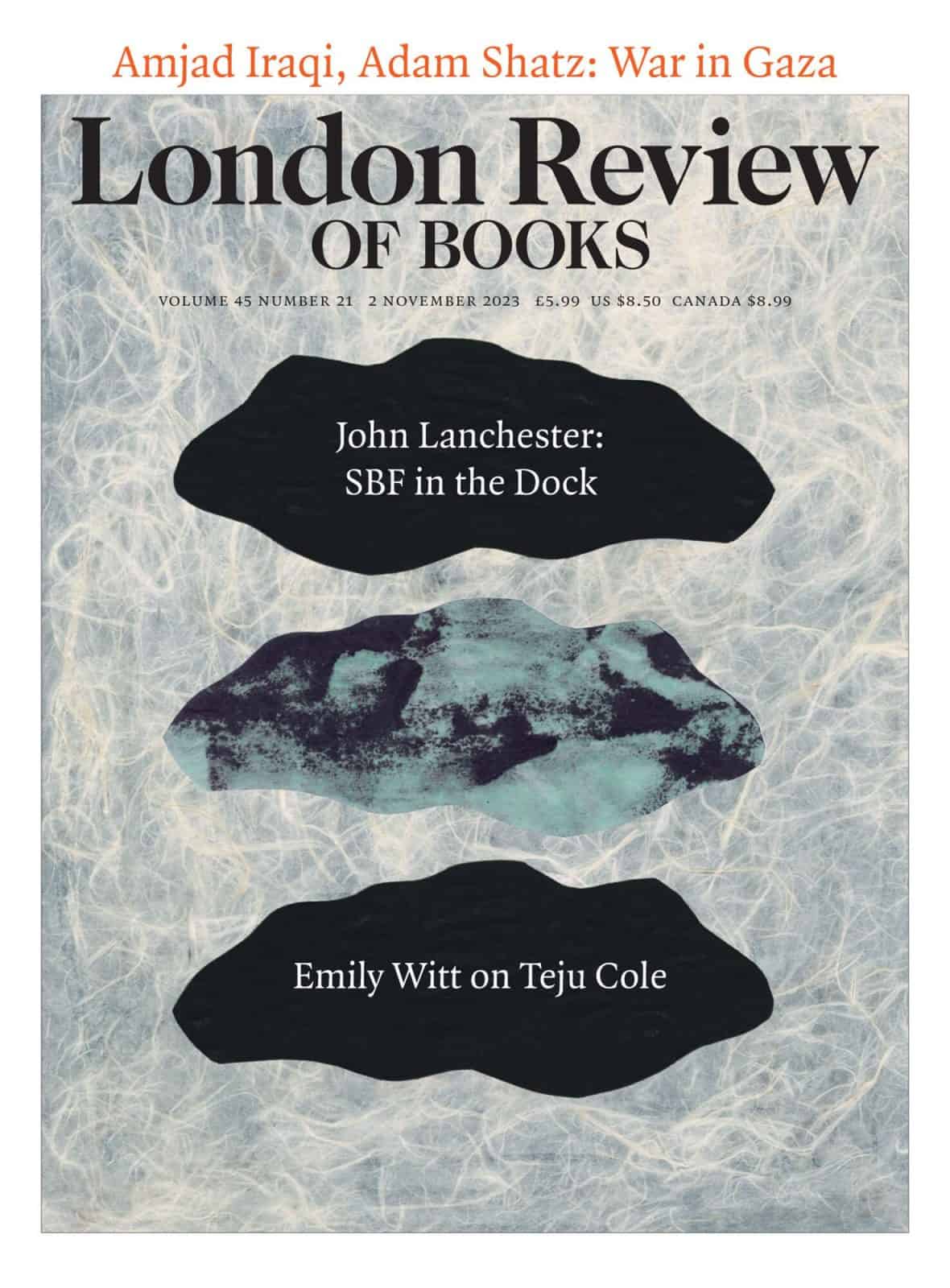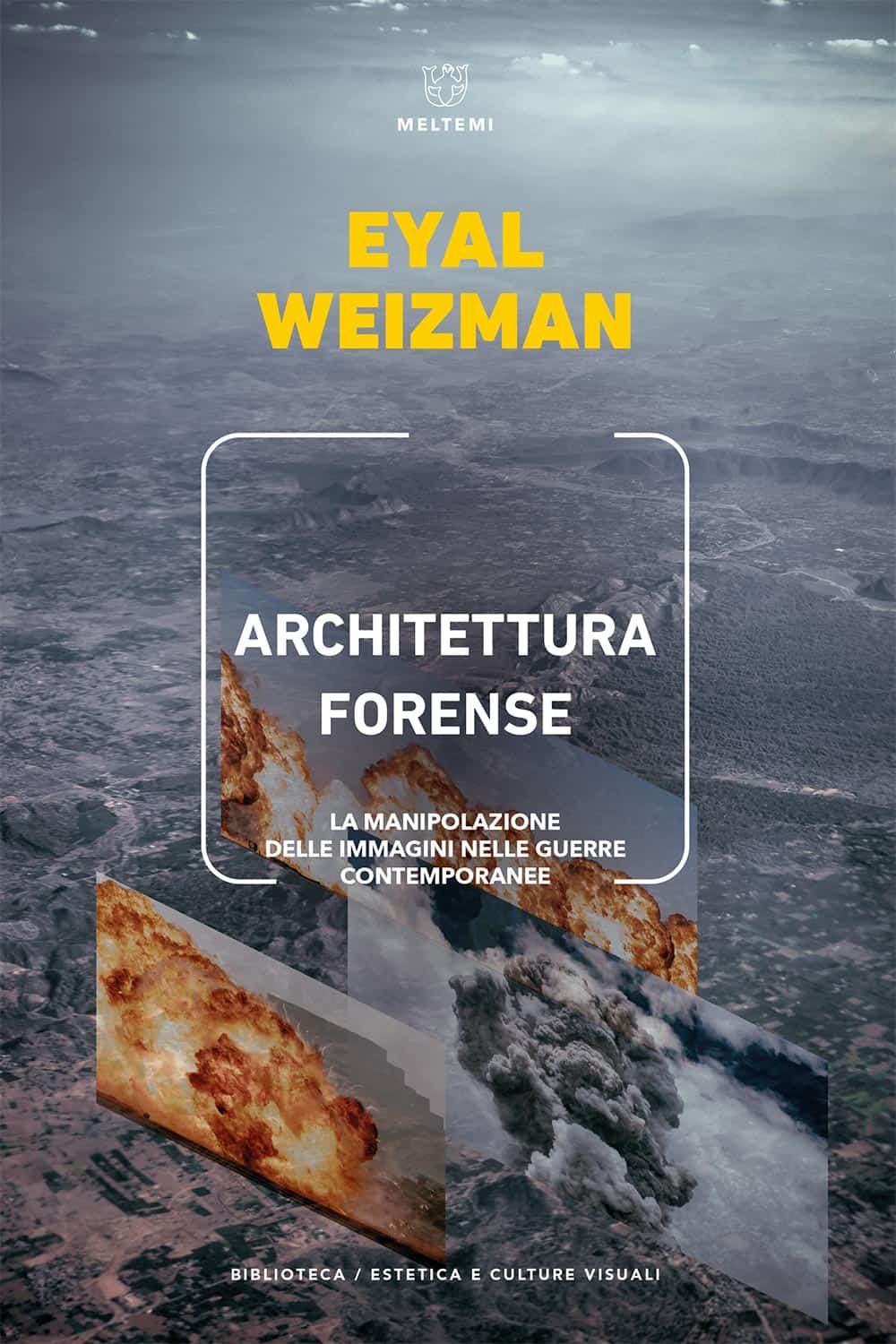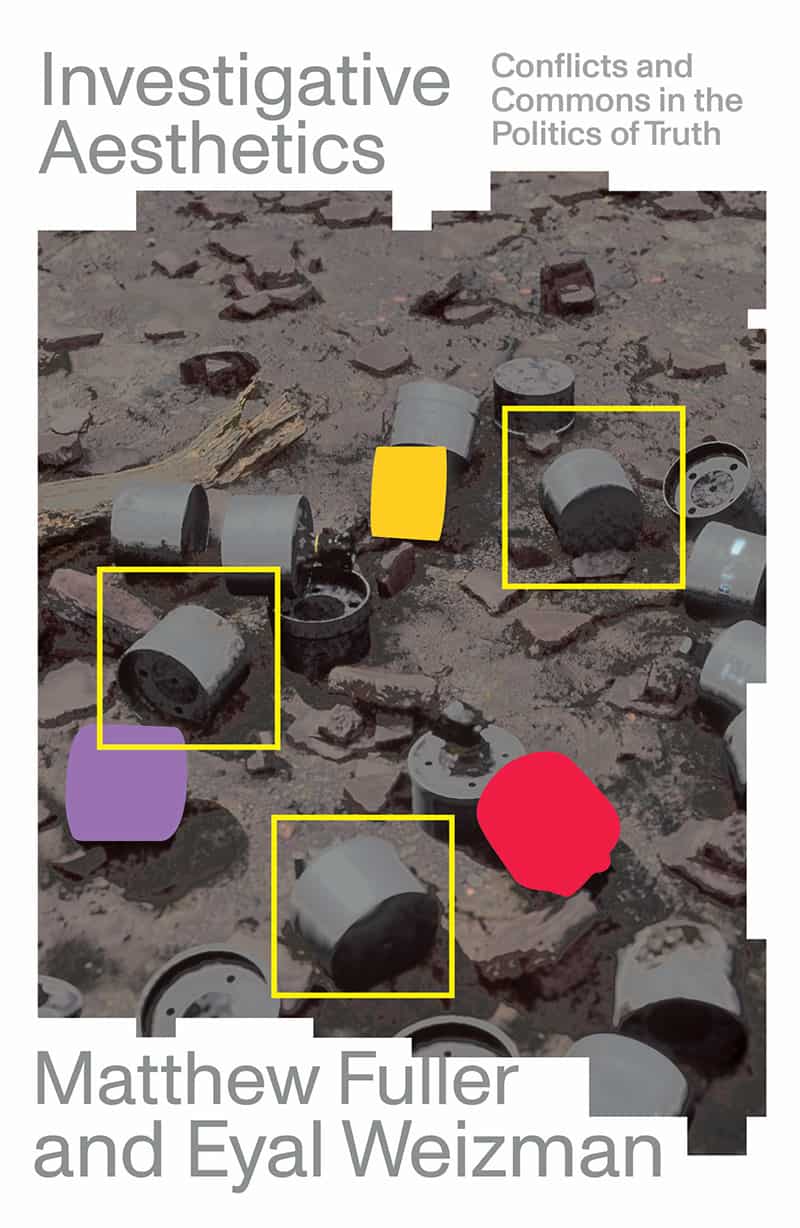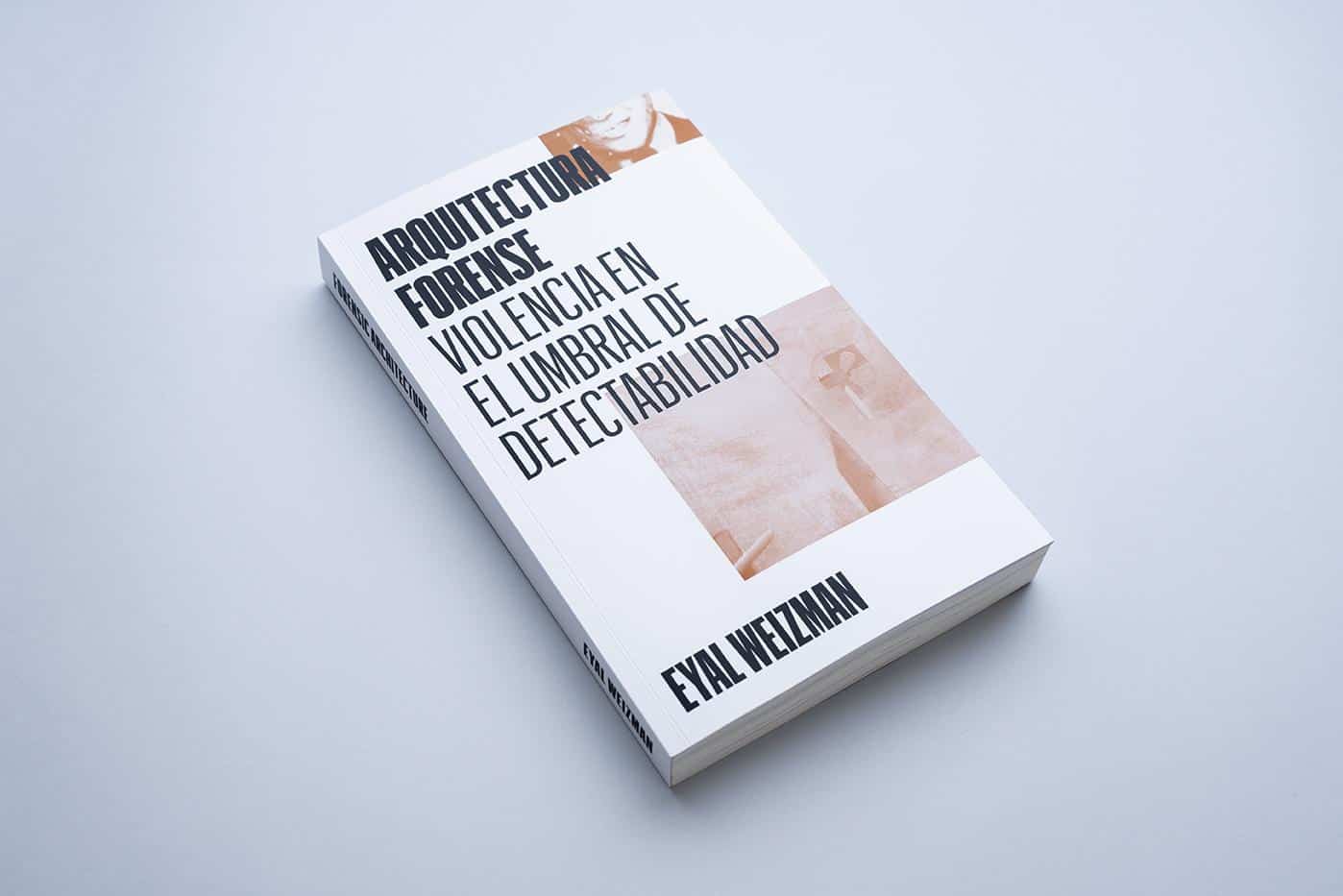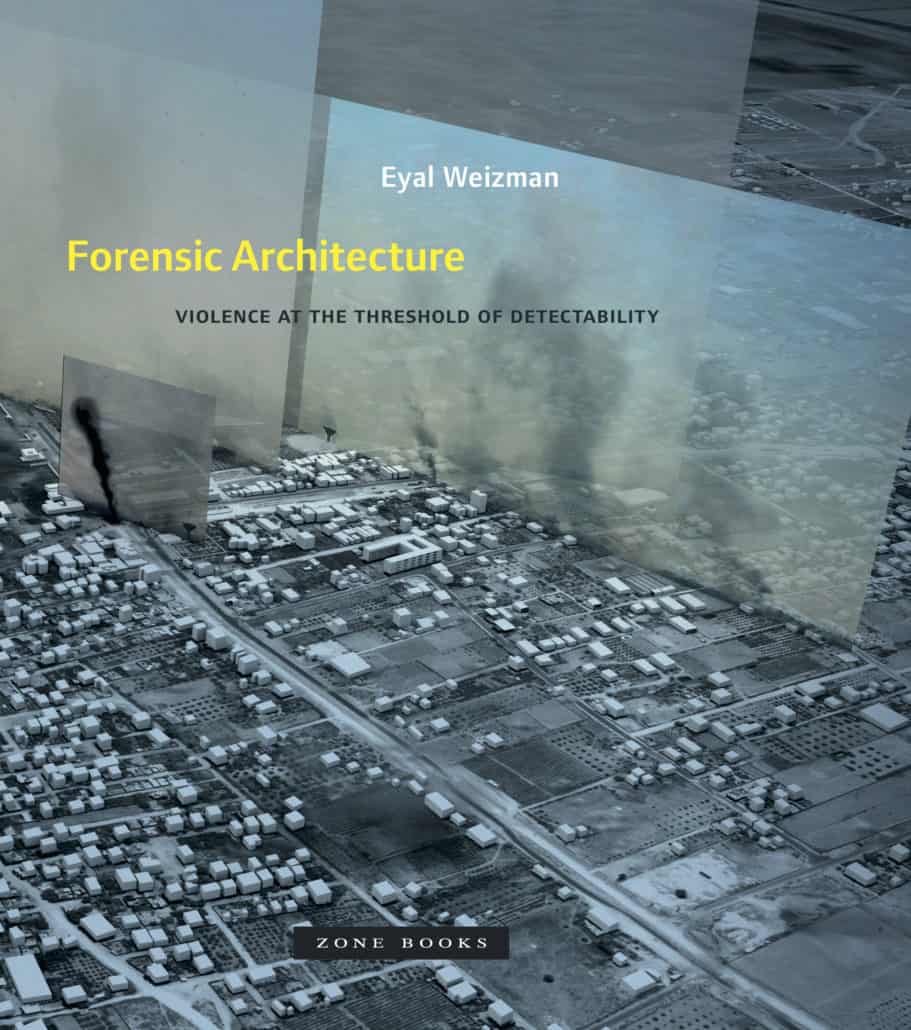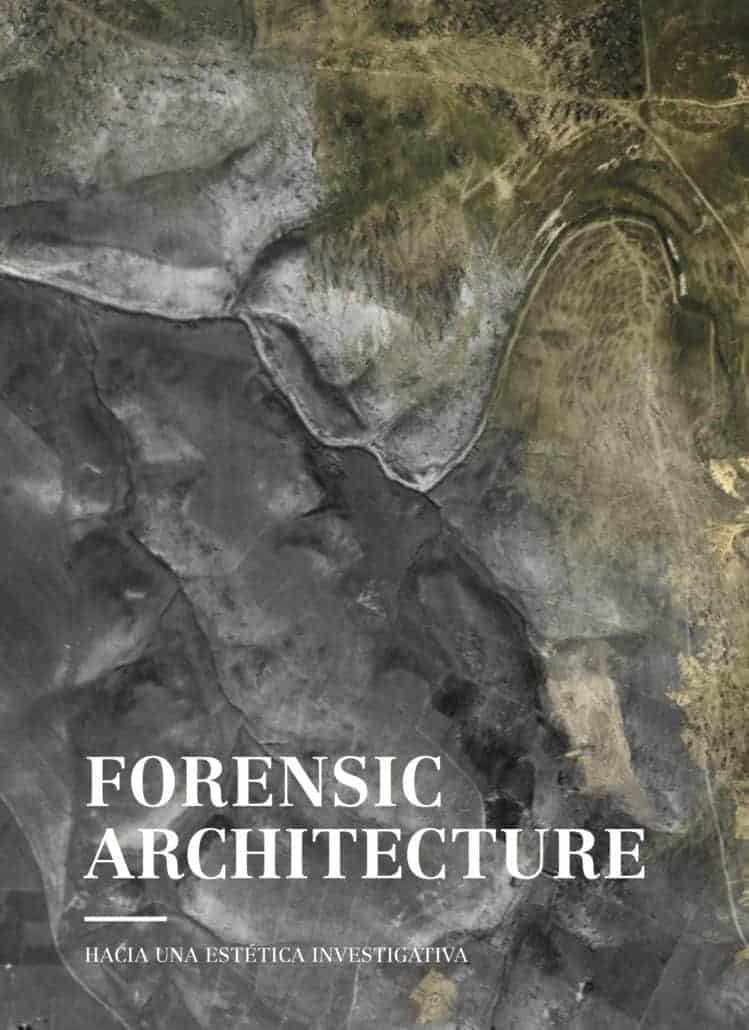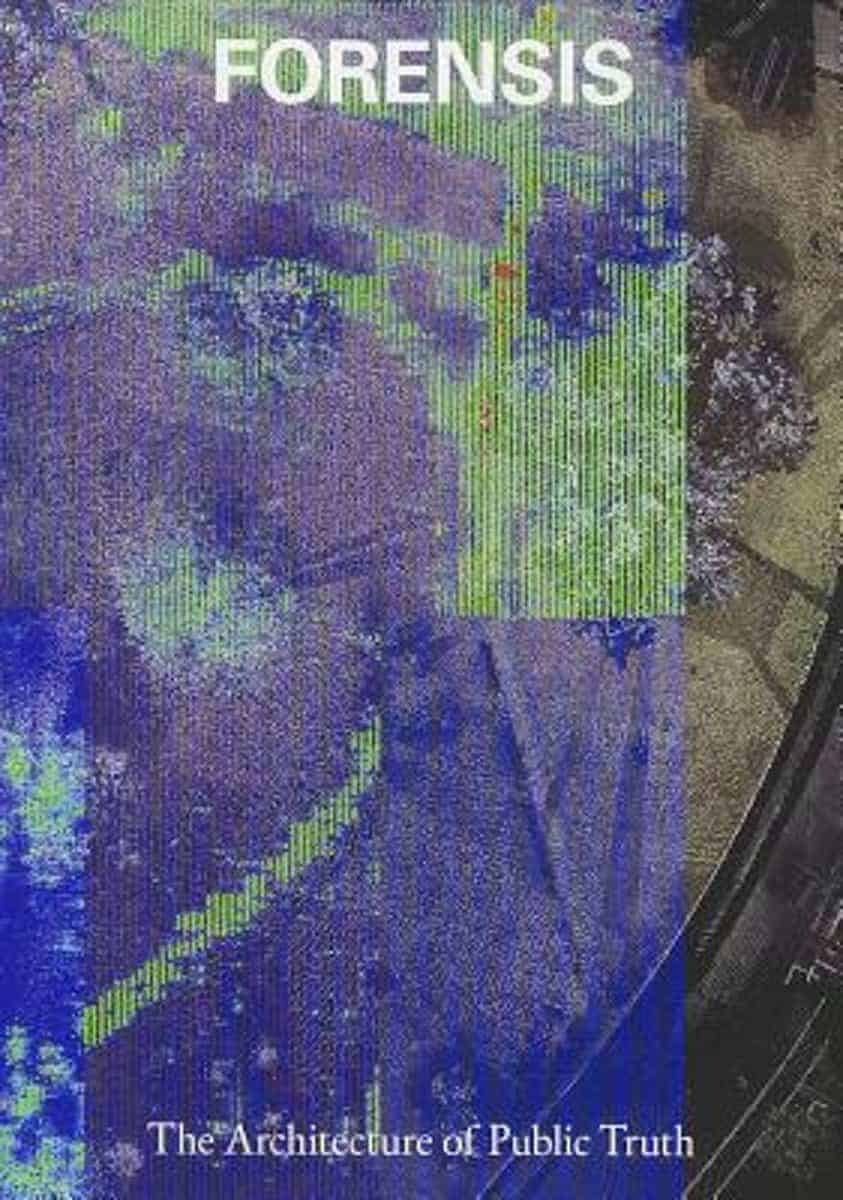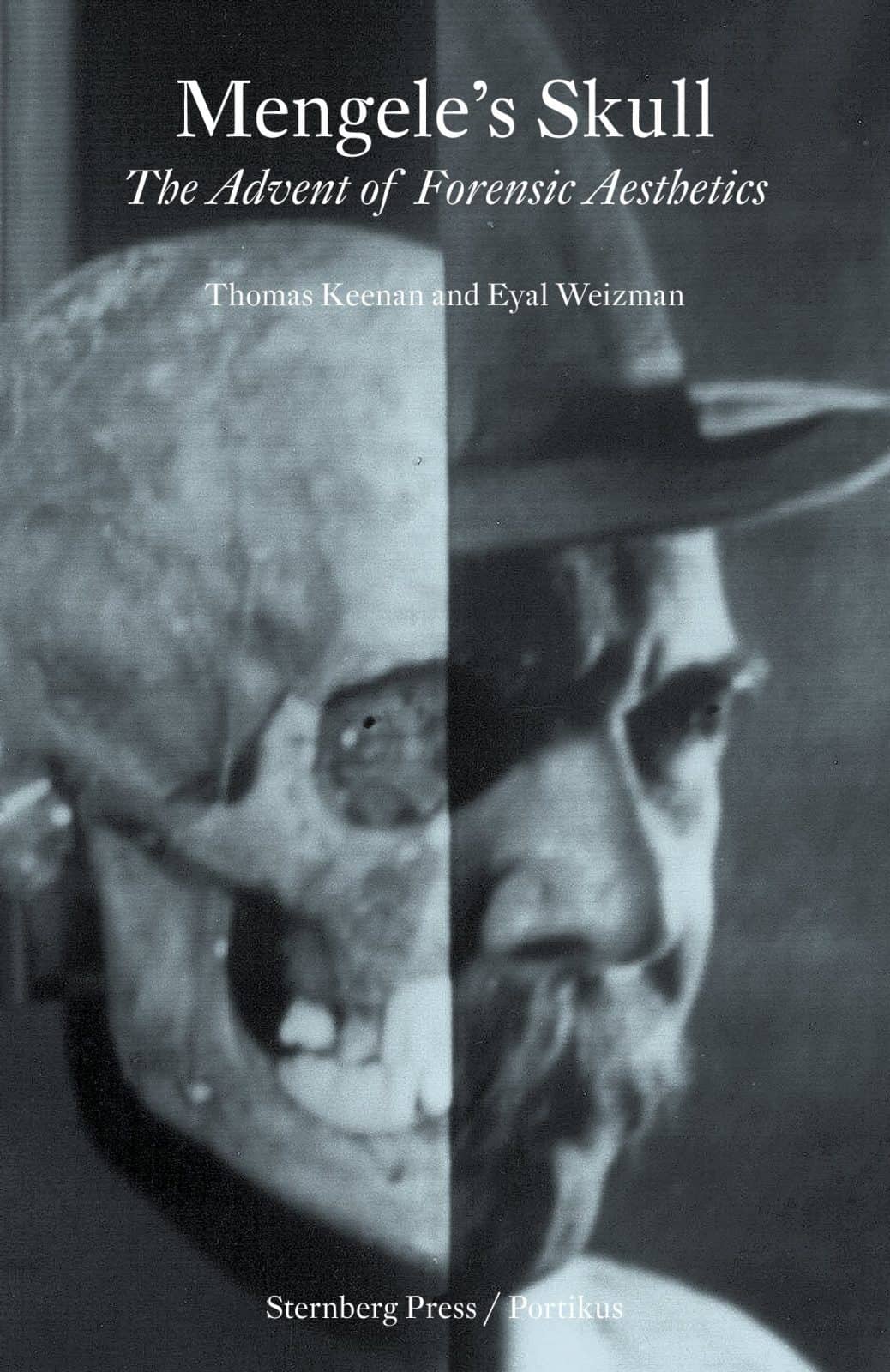Featured Publications
Eyal Weizman, Three Genocides, London Review of Books, Vol. 46, no. 8, 25 April 2024
Read More...Read Less...
Read our report on the Shark Island concentration camp. Full investigation coming soon.
Read More...Read Less...
Eyal Weizman, Exchange Rate, London Review of Books, Vol. 45, no. 21, 2 November 2023
Read More...Read Less...
Eyal Weizman, Architettura forense: La manipolazione delle immagini nelle guerre contemporanee, Meltemi Editore
(IT)Com’è possibile far sparire le tracce della violenza dalla scena del crimine servendosi di un’immagine via satellite? Questa è la denuncia di Eyal Weizman a proposito delle nuove tecnologie digitali. Utilizzata nell’investigazione architettonica forense, la fotografia satellitare risente infatti di un grave limite di risoluzione, la cosiddetta “soglia di percepibilità“: la risoluzione massima imposta alle immagini satellitari di dominio pubblico non consentirebbe di distinguere nulla di più piccolo di un singolo pixel.
Read More...Read Less...
Matthew Fuller and Eyal Weizman, Investigative Aesthetics: Conflicts and Commons in the Politics of Truth, Verso Books
A new field of counterinvestigation in journalism, human rights, art and law
Today, artists are engaged in investigation. They probe corruption, human rights violations, environmental crimes and technological domination. At the same time, areas not usually thought of as artistic make powerful use of aesthetics. Journalists and legal professionals pore over opensource videos and satellite imagery to undertake visual investigations. This combination of diverse fields is what the authors call “investigative aesthetics”: the mobilisation of sensibilities associated with art, architecture and other such practices in order to speak truth to power.
Investigative Aesthetics draws on theories of knowledge, ecology and technology; evaluates the methods of citizen counter-forensics, micro-history and art; and examines radical practices such as those of WikiLeaks, Bellingcat, and Forensic Architecture. These new practices take place in the studio and the laboratory, the courtroom and the gallery, online and in the streets, as they strive towards the construction of a new common sense.
Matthew Fuller and Eyal Weizman have here provided an inspiring introduction to a new field that will change how we understand and confront power today.
Read More...Read Less...
Eyal Weizman, Arquitectura forense: violencia en el umbral de detectabilidad, Bartlebooth
(ES)El trabajo de Forensic Architecture, una pequeña agencia de investigación con sede en Londres, ha logrado trasladar los escenarios de disputa de la disciplina y relevancia arquitectónica desde los despachos profesionales a los tribunales y foros internacionales. A través de un nuevo conjunto de sistemas de representación, análisis e investigación que cruzan investigaciones espaciales con nuevos medios de producción de imagen, toma de datos con modelados virtuales logran ser piezas clave en casos de violación de derechos humanos, conflictos internacionales al lado de comunidades afectadas por la violencia política, fiscales y organizaciones humanitarias.
Eyal Weizman, fundador del grupo, abre las puertas del laboratorio con un afán didáctico por explicar las bases principales que han sustentado su trabajo durante la última década, apoyándose en casos de estudio que nos llevan desde los ataques con drones en las montañas de Afganistán a centros de detención en Siria, del registro borroso de un disparo en un vídeo a los píxeles de una imagen satélite, de los bombardeos en Gaza a las montañas guatemaltecas. Una narración paralela que logra conectar los planteamientos teóricos de la agencia con las investigaciones que los han ido alimentando.
Read More...Read Less...
Eyal Weizman, Forensic Architecture: Violence at the Threshold of Detectability, Zone Books
In recent years, a little-known research group named Forensic Architecture began using novel research methods to undertake a series of investigations into human rights abuses. Today, the group provides crucial evidence for international courts and works with a wide range of activist groups, NGOs, Amnesty International, and the UN.
Beyond shedding new light on human rights violations and state crimes across the globe, Forensic Architecture has also created a new form of investigative practice that bears its name. The group uses architecture as an optical device to investigate armed conflicts and environmental destruction, as well as to cross-reference a variety of evidence sources, such as new media, remote sensing, material analysis, witness testimony, and crowd-sourcing.
In Forensic Architecture, Eyal Weizman, the group’s founder, provides, for the first time, an in-depth introduction to the history, practice, assumptions, potentials, and double binds of this practice. The book includes an extensive array of images, maps, and detailed documentation that records the intricate work the group has performed. Traversing multiple scales and durations, the case studies in this volume include the analysis of the shrapnel fragments in a room struck by drones in Pakistan, the reconstruction of a contested shooting in the West Bank, the architectural recreation of a secret Syrian detention center from the memory of its survivors, a blow-by-blow account of a day-long battle in Gaza, and an investigation of environmental violence and climate change in the Guatemalan highlands and elsewhere.
Weizman’s Forensic Architecture, stunning and shocking in its critical narrative, powerful images, and daring investigations, presents a new form of public truth, technologically, architecturally, and aesthetically produced. The practice calls for a transformative politics in which architecture as a field of knowledge and a mode of interpretation exposes and confronts ever-new forms of state violence and secrecy.
Read More...Read Less...
Forensic Architecture, Forensic Architecture: Hacia una estética investigativa, MACBA/MUAC
(ES)Tal vez hayan sido dos las exposiciones iberoamericanas de este año que más puentes han creado entre el arte contemporáneo y otros ámbitos del conocimiento: Cómo atrapar el universo en una telaraña (Museo de Arte Moderno de Buenos Aires), de Tomás Saraceno, que ha puesto en diálogo a la aracnología y a la astrofísica; y Forensic Architecture (Museo de Arte Contemporáneo de Barcelona y Museo Universitario Arte Contemporáneo de México), que ha llevado al ámbito museístico la investigación antropológica, urbanística y política en la violencia institucional. El catálogo es de lectura obligatoria para los interesados en cómo el Big Data se convierte en storytelling . O en cómo se pueden llevar a cabo proyectos tan potentes como esta web: “El caso Ayotzinapa: cartografía de la violencia”.
Read More...Read Less...
Eyal Weizman, Anselm Franke, and Forensic Architecture (eds.), FORENSIS: The Architecture of Public Truth, Sternberg Press
Forensics originated from the term ‘forensis’, which is Latin for pertaining to the forum. The Roman forum was a multidimensional space of negotiation and truth-finding, in which humans as well as objects participated in politics, law, and the economy.
With the advent of modernity, forensics came to refer exclusively to the courts of law and to the use of medicine, and today as a science in service to the law. The present use of forensics, along with its popular representations have become increasingly central to the modes by which states police and govern their subjects.
By returning to ‘forensis’ this book seeks to unlock forensics original potential as a political practice and reorient it. Inverting the direction of the forensic gaze it designates a field of action in which individuals and organizations detect and confront state violations.
Read More...Read Less...
Eyal Weizman and Thomas Keenan, Mengele’s Skull: The Advent of a Forensic Aesthetics, Sternberg Press
In 1985, the body of Josef Mengele, one of the last Nazi war criminals still at large, was unearthed in Brazil. The ensuing process of identifying the bones in question opened up what can now be seen as a third narrative in war crime investigations—not that of the document or the witness but rather the birth of aforensic approach to understanding war crimes and crimes against humanity.
In the period coinciding with the discovery of Mengele’s skeleton, scientists began to appear in human rights cases as expert witnesses, called to interpret and speak on behalf of things—often bones and human remains. But the aesthetic, political, and ethical complications that emerge with the introduction of the thing in war crimes trials indicate that this innovation is not simply one in which the solid object provides a stable and fixed alternative to human uncertainties, ambiguities, and anxieties.
The complexities associated with testimony—that of the subject—are echoed in the presentation of the object. Human remains are the kind of things from which the trace of the subject cannot be fully removed. Their appearance and presentation in the courts of law and public opinion has in fact blurred something of the distinction between objects and subjects, evidence and testimony.
Read More...Read Less...
Other Publications
Eyal Weizman, ‘Eyal Weizman / Forensic Architecture: Everything records’, Interview by Freya Marshall, mono.kultur #48, 2020
2020
Ifor Duncan and Stefanos Levidis, ‘Weaponizing a River’, At The Border, e-Flux, 11 April 2020
2020
Eyal Weizman, Maite Borjabad López-Pastor ‘Truth Is Not a Noun: Eyal Weizman in conversation with Maite Borjabad López-Pastor’ in Kathryn B. Hiesinger et al. (eds.), Designs for Different Futures, Yale University Press
2019
Forensic Architecture Studio and the Centre for Research Architecture, Lines of Inquiry: Glossary, media, field manual, Goldsmiths, University of London
2019
Eyal Weizman, ‘Eyal Weizman Interview’, in Ana Altberg, Mariana Meneguetti and Gabriel Kozlowski (eds.), 8 Reações Para o Depois – 8 Reactions for Afterwards, Rio Books
2019
Christina Varvia, ‘The NSU Case’, in Markus Miessen and Zoe Ritts (eds.), Para-Platforms: On the Spatial Politics of Right-Wing Populism, Sternberg Press
2019
Robert Mackey and Robert Trafford, A German Intelligence Agent Was at the Scene of a Neo-Nazi Murder. He Can’t Explain Why, The Intercept
2017
